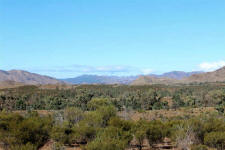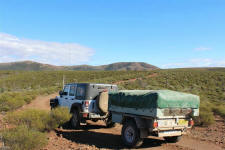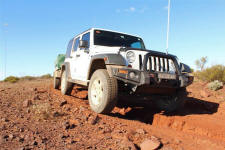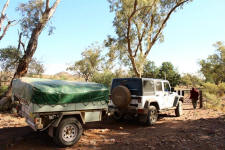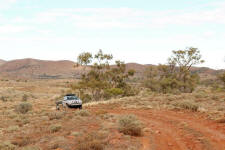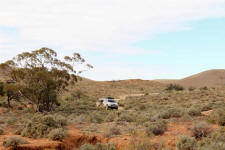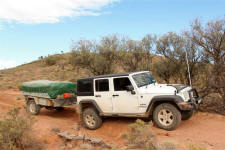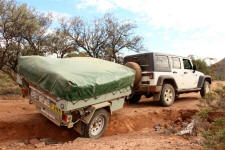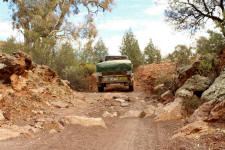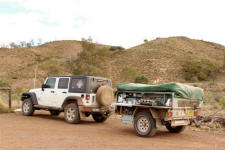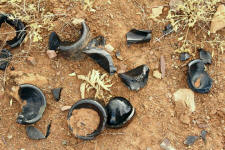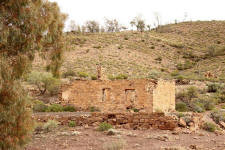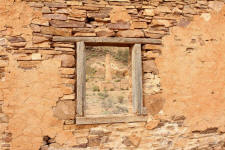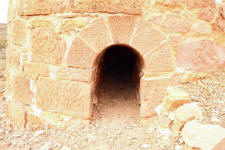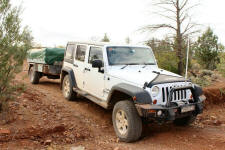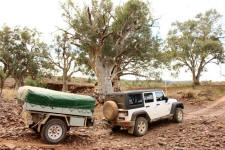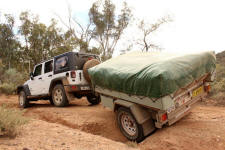|
The remains of the
Nuccaleena Mine would have to be the best mine ruins site in
the Flinders Ranges with most of the stone buildings and
structures still intact. It is situated via PAR 3 on
Moolooloo Station off a loop road between Blinman to
Parachilna Gorge via Glass Gorge.
The eighteen kilometre journey to the mine site quickly
becomes a rough, rocky track with frequent washouts keeping
you on your toes, as does the few steep entry and exists
through red gum lined creek beds. Not far from the start you climb a ridge
past a tower with scenic views over the low native
vegetation consisting mainly of hop & soapbush with patches
of native pine out to the distance ranges.
Copper was discovered at Nuccaleena by William Finke in the
mid 1850ís. Sufficient finances where raised in England and
by
early 1860 with only sixteen men, 100 tons of copper ore were mined in
five weeks. March 1861 saw eighty six men employed and
working at the mine site, including thirty six miners, five
masons, four sawyers, two cooks and a medical officer. The
Great Northern Mining Company built a small town around the
mine site where the miners and mechanics of the company
resided.
By 1863 there were also the Captains apartments, office,
stone stables, a goods store, smithís shop, a workshop,
general store, doctorís house and about twenty huts for the
miners. However by 1866 the Nuccaleena Mine had produced only £13,000 worth
of copper ore after expending £57,000 on the enterprise.
Soon after the mine was abandoned as an enormous financial
failure.
Just before the mine ruins you pass the remains of the
historic Tam O'Shanter Bushmans Hotel and another stone
building nearby. Camping is permitted here next to the old
pub only after seeking permission at the Moolooloo Station
Homestead. There are no facilities and you will need to
bring your own water.
The Nuccaleena mine site has many open cut mine areas and
deep shafts. Exercise extreme care when walking around the
site.
PAR details
Public Access Routes or PARs are established under the
Pastoral Land Management and Conservation Act 1989 to
provide public access over pastoral land without the need
for travellers to ask permission from the lessee. There are
a network of 24 PARs in South Australia.
PARs are not roads or part of the formal road network. They
are unimproved and unsurfaced dirt tracks intended to
provide four wheel drive access in dry conditions only. The
are usually part of the network of tracks used by the
lessees to manage their pastoral properties and can be used
by a range of vehicles including trucks, semi-trailers and
road-trains, as well as for droving stock. As PARs are not
fenced, be aware of wandering livestock, especially near
yards and waterpoints.
|
